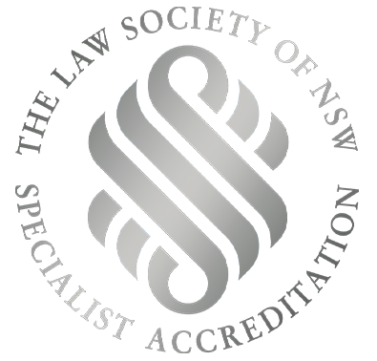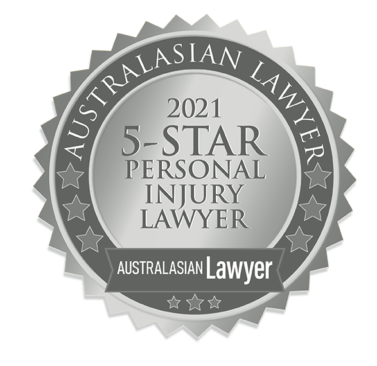
How to Lodge a CTP Claim – Your Application for Personal Injury Benefits.
If you’ve been injured in a car accident and you’re making a CTP injury claim in NSW, the first step is to lodge an application for personal injury benefits. In this article we cover everything you need to know, including what to do before you lodge your claim, a step-by-step guide to lodging, and how you can get help if you need it.

Before you lodge your application for personal injury benefits.
Before you lodge your claim, take a few minutes to review the supporting information and documents you’ll need, and how your application will be assessed.
Your income assessment.
You’ll need to provide evidence of your income before the accident so that the insurer can start paying you weekly payments to cover your lost wages. You may be asked to provide 12 months’ pay slips, and the insurer will take an average over the 12 months to calculate your pre-accident earnings.
Please note that this method could work against you if you’ve had a period of no income or lower than normal income. For more information about this, see our article about checking and disputing a CTP claim. This table offers an overview of what you may be able to claim:
| Weeks since the accident | Income support payments |
|---|---|
| Weeks 1-13 |
|
| Weeks 14-26 |
|
| Beyond week 26 |
|
Your certificate of capacity.
You’ll need a certificate of capacity from a GP to provide evidence of your injuries. Then after you lodge your application for personal injury benefits, you’ll need to continue to see your GP and get a new certificate of capacity every 30 days, or whenever your current certificate expires. You must do this to continue to receive your benefits.
Make sure all your injuries are documented, including any new injuries that have developed and any psychological issues you’re experiencing. Something that seems insignificant at the time can progress into something more serious, so it’s important that everything is considered.
What you’ll need to lodge your application for personal injury benefits:
- Your Medicare number and reference number
- Your driver’s license number (if applicable)
- Your bank account details, if you wish to be paid by direct deposit
- Your police event number
- Your “certificate of fitness” from your GP
- Evidence of your income – like pay slips
- Evidence of medical treatment, if you have it
- Details of any previous claims you’ve made
Once you understand the CTP personal injury claim process and have the relevant assessments from your doctor, you’re ready to lodge your application for personal injury benefits.
Getting help with your CTP accident claim.
The CTP scheme is designed so that you can lodge your own application for personal injury benefits without using a lawyer. In fact, even if a lawyer does help you lodge your claim, they’re not allowed to charge for their time.
However, if you’re entitled to common law damages (lump sum compensation), these amounts can be substantial so it’s important to get legal advice before you lodge your claim to make sure you don’t miss out on any benefits or lump sums you’re entitled to.
You can get free legal advice or help with your application from a specialist CTP lawyer by calling 13 15 15.
Lodging your application for personal injury benefits.
Here’s a step-by-step guide to lodging your claim.
Step 1 & 2: Your personal details and the declaration.
Fill out your personal details carefully and don’t skip any fields. Your Medicare number can be found on your Medicare card and your reference number is the number next to your name if there are two or more people listed on your card. Once you’ve filled out your personal details, read and sign the declaration.
Step 3: About the accident and your injuries.
| Section | Tips |
|---|---|
| Police event number |
|
| Details of the accident |
|
| Details of your injuries |
|
If your injuries are classified as threshold (minor) injuries, you won’t be entitled to claim a lump sum for future lost wages or pain and suffering, and your benefits will be cut off after a maximum of six months (if you’re injured before April 1st 2023) or 12 months (if you’re injured after April 1st 2023). For more information on the definition of a threshold injury please refer to our what you need to know about a CTP claim article.
Step 4: About your health.
The next section of the form is about your health – this is where you attach any invoices, receipts, medical reports, and any other evidence of the treatment you’ve received. If you’ve been to hospital, you should attach the hospital report, or if not, you should attach your certificate of capacity from your GP.
If you’ve made a thorough list of all your injuries in step 3, you should take this with you to your GP appointment to make sure nothing’s missed. Your GP can also attach more details to your certificate of capacity if they won’t fit on the form.
Step 5: Treatment details.
This is where you provide hospital and ambulance details if you were taken to hospital.
Step 6: Your employment and income.
Next, fill out your employment and income information. The insurer will use this information to calculate your weekly benefits if you have time off work. You’ll be asked to provide 12 months’ pay slips, and the insurer will take an average over the 12 months. Make sure you include your tax file number declaration to avoid being charged a 48% taxation rate.
Steps 7 & 8: Employment and employer details.
This is where you add details about time off work due to the accident. If you’ve already returned to work, you can write down the total time you were off work. If you’re still off work, or expecting future time off work, make a note here. For example: “Four weeks off work so far, expected to be off work for at least another four weeks”.
When you outline your earnings at the time of the accident, remember to include all overtime, regular bonuses, and commissions. Finally, read and sign the declaration at the bottom of the form.
What happens next?
Your application will be reviewed by the insurer, who must tell you within four weeks if they’re accepting or denying the claim. Then the insurer will start making payments to you within 14 days if they accept the claim.
You’ll also need to have your certificate of capacity updated regularly – either every 30 days or more often if your certificate is valid for less than 30 days.
It’s really important that all of your injuries are documented thoroughly by your GP – if any information is left out, it could prevent you from getting benefits you’re entitled to.
When to call a lawyer.
You can lodge your application for personal injury benefits yourself, but if you need to make a separate lump sum (common law) claim then you’ll need a lawyer to help you.
You should only lodge a CTP injury claim yourself if you have threshold (minor) injuries, as above-threshold injuries are much more complex cases, and you have to apply for lump sum benefits separately. The chance of missing out on benefits that you may be entitled to is much higher if you have above-threshold injuries, so it’s worth getting some free advice from a specialist CTP lawyer before you lodge your CTP claim.
If you’re not sure if your injuries are considered threshold or above threshold, refer to our article what you need to know about a CTP claim, or give us a call and chat with a specialist car accident lawyer today. At Law Partners we take the time to get to know you personally, and we win over 99% of our cases. We have specialist lawyers based in and around Sydney ready to help. We pride ourselves on winning the maximum lump sum payouts for our clients.
Related articles
Do I have a case?
Our senior lawyers will assess your case for free.


















